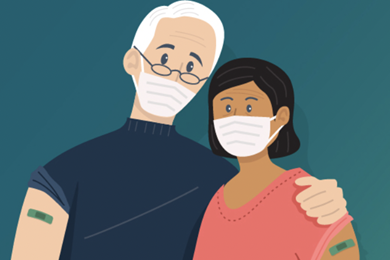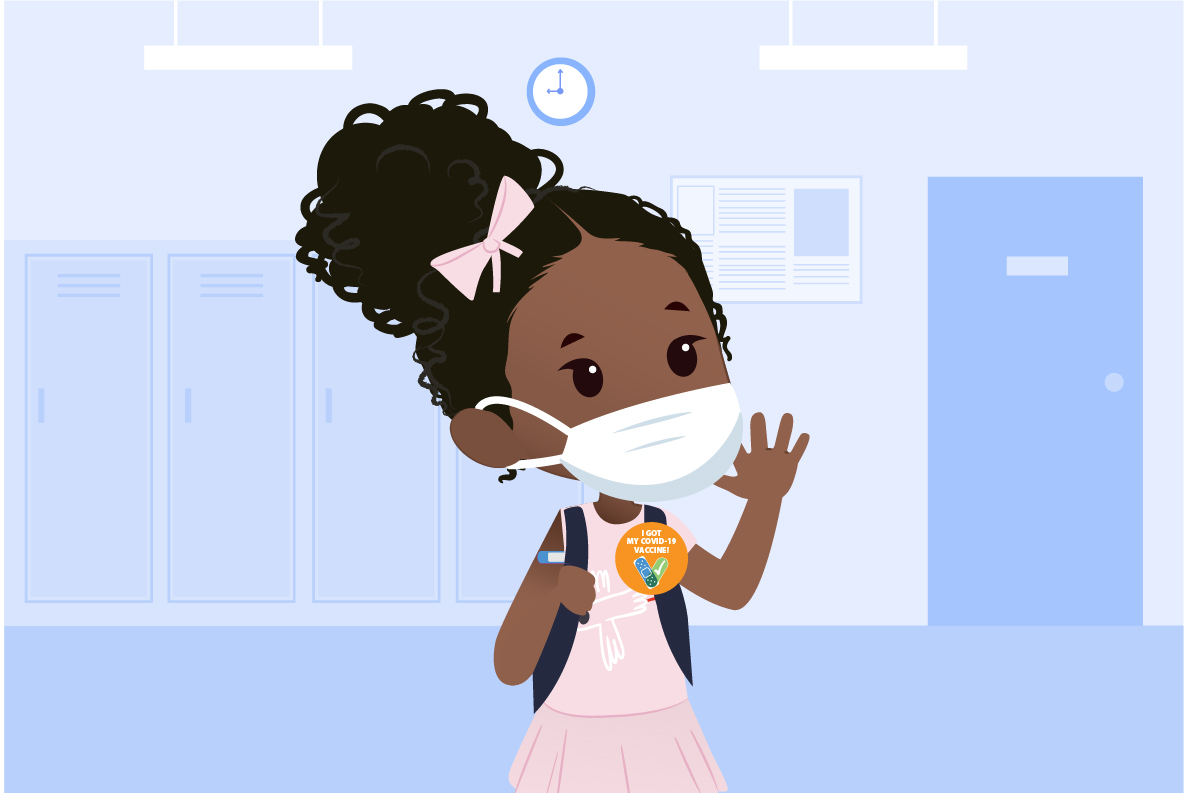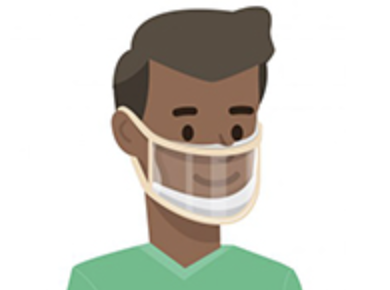Recommendations for Fully Vaccinated People
COVID-19 Homepage
Use and Care of Masks
Wear a mask with the best fit, protection, and comfort for you
Masks can help protect you and others from COVID-19. Learn more about different types of masks and respirators and how to get the best fit.
When to Wear a Mask or Respirator
Layered prevention strategies — like staying up to date on vaccines and wearing masks — can help prevent severe illness and reduce the potential for strain on the healthcare system. Wear a mask with the best fit, protection, and comfort for you.
Know the COVID-19 hospital admission level where you live
COVID-19 hospital admission levels are a tool to help communities decide what prevention steps to take based on the latest data.
It is important to wear a mask or respirator when you are sick or caring for someone who is sick with COVID-19. When caring for someone who is sick with COVID-19, a respirator will provide you the best level of protection.
People at higher risk for severe illness

Some people are more likely to become very sick with COVID-19
- People who are older
- People with certain medical conditions
- Pregnant and recently pregnant people
People at increased risk, and those who live with or visit them, should
- Talk to their healthcare provider about whether they and the people around them should wear a mask or respirator when the COVID-19 hospital admission level is medium.
- Wear a mask or respirator that provides them with greater protection when the COVID-19 hospital admission level is high.
Children

Children ages 2 years and older can wear masks or respirators to protect themselves and others from COVID-19.
Choose a high-quality and comfortable mask or respirator that your child can wear properly. A poorly fitting or uncomfortable mask or respirator might be worn incorrectly or removed often, and that would reduce its intended benefits.
- Choose a size that fits over the child’s nose and under the chin but does not impair vision.
- Follow the user instructions for the mask or respirator. These instructions may show how to make sure the product fits properly.
- Some types of masks and respirators may feel different if your child is used to wearing cloth or disposable procedure masks.
Parents and caregivers may have questions about NIOSH-approved respirators (such as N95s), and international respirators (such as KN95s and KF94s) for children. Although respirators may be available in smaller sizes, they are typically designed to be used by adults in workplaces, and therefore may not have been tested for broad use in children.
Safety precautions
- If your child has a medical condition, such as a heart or lung problem, ask their healthcare provider before they use methods to improve mask fit or use an ASTM F3502 mask or a respirator.
- If your child has a hard time breathing, gets dizzy, or has other symptoms while you are trying to get the mask to fit better or when using an ASTM F3502 mask or a respirator, choose a cloth or disposable mask. They should continue to protect themselves and others. Consult your healthcare provider if these symptoms do not resolve.
People with disabilities

Certain groups of people may find it difficult to wear a mask, including people of any age with certain disabilities.
Challenges may be caused by being sensitive to materials on the face, difficulty understanding the importance of mask wearing for protection, or having difficulty controlling behavior to keep the mask in place.
People with certain disabilities or their caregivers can assess whether they need to wear a mask. They should do this by considering the person’s ability to:
- Wear a mask correctly (proper mask size and fit)
- Avoid frequent touching of the mask and face
- Limit sucking, drooling, or having excess saliva on the mask
- Remove the mask without assistance
People who are deaf or hard of hearing

These individuals may consider:
- Wearing a clear mask or a cloth mask with a clear panel
- If a clear mask is not available, using written communication, closed captioning, or decreasing background noise to make communication possible while wearing a mask that blocks lips
Travelers

Wearing a high-quality mask while you travel can help protect you and others.
Learn about the latest recommendation for wearing masks during travel.
How to Care for Your Mask
Correct and consistent care for your mask helps to provide the best protection
How to take off your mask
Disposable masks and cloth masks: Untie the strings behind your head or stretch the ear loops and fold the outside corners together.
Respirators: Follow the manufacturer’s instructions.
- For reusable cloth masks
- If your cloth mask is wet or dirty, put it in a sealed plastic bag until you can wash it. This will keep it from getting moldy.
- If your cloth mask is dry and clean, you can store it in a breathable bag (like a paper or mesh fabric bag) to keep it clean between uses in the same day.
- Cloth masks should be washed at least once a day or as soon as they become wet or dirty. You can either wash and dry your masks by hand or use a washer and dryer.
- Wash or sanitize your hands after removing any mask.
Taking off your mask while you eat or drink
If you are taking off your mask to eat or drink outside of your home, you can place it somewhere safe to keep it clean, such as your pocket, purse, or paper bag. After eating, put the mask back on with the same side facing out. Be sure to wash or sanitize your hands again after taking off your mask and after putting your mask back on.
When to throw away or change your mask
- Disposable masks should be thrown away after they’re worn once.
- If you use respirators, check the manufacturer’s instructions to learn how long they can be worn before they should be thrown away.
- Disposable masks and respirators that become wet or dirty should be thrown away in the trash right away. Do not continue to wear a wet or dirty mask. Replace it with a dry, clean mask.


